| Date | Text | |
|---|---|---|
30 Nov 1914
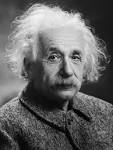
Einstein's |
Einstein's (astronomy) Einstein's new theory of general relativity is used to explain Mercury's strange motions that baffled Urbain Le Verrier. |
|
30 Nov 1914
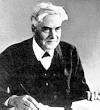
Robert Innes |
Robert Innes (astronomy) Robert Innes discovers Proxima Centauri, the closest star to Earth after the Sun. |
|
30 Nov 1914
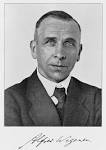
Alfred Wegener |
Alfred Wegener (earth sciences) Alfred Wegener publishes his theory of Pangea, which he calls Urkontinent. |
|
30 Nov 1914

pandemic |
pandemic (life sciences) A global pandemic of encephalitis lethargica begins. |
|
30 Nov 1914

Walter Bradford Cannon |
Walter Bradford Cannon (life sciences) Walter Bradford Cannon coins the term fight or flight to describe an animal's response to threats. |
|
30 Nov 1914

Thomas Hunt Morgan |
Thomas Hunt Morgan (life sciences) Thomas Hunt Morgan, demonstrates non-inherited genetic mutation (in Drosophila melanogaster), undermining the conceptual basis of eugenics. |
|
30 Nov 1914

Reginald Punnett |
Reginald Punnett (life sciences) Reginald Punnett's Mimicry in Butterflies is published in Cambridge (U.K.) |
|
30 Nov 1914

Clara H. Hasse |
Clara H. Hasse (life sciences) Clara H. Hasse publishes a paper identifying the cause of citrus canker which leads to the development of methods for controlling the disease, saving the citrus crops in the southern United States from being wiped out. |
|
30 Nov 1914

Emmy Noether |
Emmy Noether (mathematics) Emmy Noether proves her theorem that any differentiable symmetry of the action of a physical system has a corresponding conservation law. |
|
30 Nov 1914

Wacław Sierpiński |
Wacław Sierpiński (mathematics) Wacław Sierpiński describes the Sierpinski triangle. |
|
30 Nov 1914

Arnold Sommerfeld |
Arnold Sommerfeld (physics) Arnold Sommerfeld develops a modified Bohr atomic model with elliptic orbits to explain relativistic fine structure. |
|
30 Nov 1914

Danish |
Danish (psychology) Danish psychologist Edgar Rubin publishes Synsoplevede Figurer ("Visual Figures") introducing the optical illusion which becomes known as the Rubin vase. |
|
30 Nov 1914

William Mills |
William Mills (technology) William Mills patents, develops and manufactures the Mills bomb, a hand grenade, at the Mills Munition Factory in Birmingham, England. |
|
30 Nov 1914

Solomon Negrine |
birth Solomon Negrine June 14 - Solomon Negrine (Turns 100 soon). Bit of a legend |
|
19 Jan 1915

Georges Claude |
Georges Claude (technology) Georges Claude patents the neon discharge tube for use in advertising. |
|
24 Jan 1915

Arthur von Auwers |
death Arthur von Auwers Died 24 Jan 1915 at age 76 (born 12 Sep 1838). Georg Friedrich Julius Arthur von Auwers was a German astronomer known for his life's work making extremely accurate catalogs of stellar positions and motions. He also researched solar and stellar parallaxes, making a new reduction of James Bradley's 18th century Greenwich observations and measurements of star distances. Auwers also observed double stars, and accurately calculated the orbits of the Sirius and Procyon systems before the faint companions to the bright stars were seen. He redetermined the distance to the sun several times, making use of transits of Venus and an approach of a minor planet. |
|
04 Feb 1915

reversing rudder |
reversing rudder (technology) John G. A. Kitchen patents the reversing rudder. |
|
05 Feb 1915

Robert Hofstadter |
birth Robert Hofstadter Born 5 Feb 1915; died 17 Nov 1990 at age 75. American scientist who was a joint recipient of the Nobel Prize for Physics in 1961 for his investigations in which he measured the sizes of the neutron and proton in the nuclei of atoms. He revealed the hitherto unknown structure of these particles and helped create an identifying order for subatomic particles. He also correctly predicted the existence of the omega-meson and rho-meson. He also studied controlled nuclear fission. Hofstadter was one of the driving forces behind the creation of the Stanford Linear Accelerator. He also made substantial contributions to gamma ray spectroscopy, leading to the use of radioactive tracers to locate tumors and other disorders. (He shared the prize with Rudolf Ludwig Mössbauer of Germany.) |
|
28 Feb 1915

Sir Peter B. Medawar |
birth Sir Peter B. Medawar Born 28 Feb 1915; died 2 Oct 1987 at age 72. Sir Peter Brian Medawar was an English immunologist and author who shared, with Sir Frank Burnet, the 1960 Nobel Prize in Physiology or Medicine for their discovery of acquired immunological tolerance, which enabled organ and tissue transplantation. Medawar inoculated the embryos of mice, before they had developed the ability to form antibodies, with tissue cells from another strain. Subsequently, the “foreign” proteins were accepted, even when later the capability to form antibodies existed. Skin grafts from the second strain were then accepted by the inoculated mice. |
|
03 Mar 1915

National Advisory Committee for Aeronautics |
National Advisory Committee for Aeronautics (technology) The National Advisory Committee for Aeronautics, the predecessor of NASA, is established in the United States. |
|
15 Mar 1915

Laurent Schwartz |
birth Laurent Schwartz Laurent Schwartz (died 2002), French mathematician. |
|
16 Mar 1915

Kunihiko Kodaira |
birth Kunihiko Kodaira Kunihiko Kodaira (died 1997), Japanese mathematician. |
|
19 Mar 1915
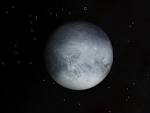
Pluto |
Pluto (astronomy) Pluto is photographed for the first time but is not classified as a planet. |
|
21 Mar 1915

Ambrosius Hubrecht |
death Ambrosius Hubrecht Ambrosius Hubrecht (born 1853), Dutch zoologist. |
|
24 Mar 1915

Margaret Lindsay Huggins |
death Margaret Lindsay Huggins Margaret Lindsay Huggins (born 1848), Irish-born astronomer. |
|
09 Apr 1915
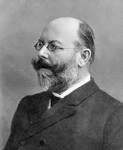
Friedrich August Johannes Löffler |
death Friedrich August Johannes Löffler Died 9 Apr 1915 at age 62 (born 24 Jun 1852). German bacteriologist who discovered the organism that causes diphtheria, Corynebacterium diphtheriae, (1884) which had first been observed by the German physiologist Theodor Klebs in the throats of diphtheria patients (the organism became known as the Klebs-Löffler bacillus). The isolation and cultivation of pure cultures involved a number of formidable technical problems; Löffler found it necessary to develop a new medium, thickened serum, as the conventional gelatin used by Robert Koch required temperatures far too low for the diphtheria pathogen. In 1898, with Paul Frosch, he showed that viruses could cause diseases in animals by passing foot-and-mouth disease in cows by inoculation with cell-free filtrates taken from lesions. |
|
19 Apr 1915

Thomas Clouston |
death Thomas Clouston Sir Thomas Clouston (born 1840), Scottish psychiatrist. |
|
13 May 1915

Morgan Crofton |
death Morgan Crofton Morgan Crofton (born 1826), Irish-born mathematician. |
|
22 May 1915

Lassen Peak |
Lassen Peak (earth sciences) Lassen Peak, one of the Cascade Volcanoes in Northern California, erupts, sending an ash plume 30,000 feet in the air and devastating the nearby area with pyroclastic flows and lahars. It is the only volcano to erupt in the contiguous United States between 1900 and 1980. |
|
30 May 1915

Henry Aaron Hill |
birth Henry Aaron Hill Henry Aaron Hill (died 1979), American fluorocarbon chemist and first African American president of the American Chemical Society. |
|
15 Jun 1915

Thomas Huckle Weller |
birth Thomas Huckle Weller Thomas Huckle Weller (died 2008), American virologist and co-recipient of the Nobel Prize in Physiology or Medicine (1954) for his work on polio. |
|
24 Jun 1915
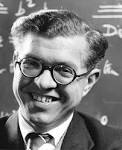
Fred Hoyle |
birth Fred Hoyle Fred Hoyle (died 2001), English astronomer and science fiction writer. |
|
01 Jul 1915

synchronization gear |
synchronization gear (technology) First use of synchronization gear in aerial warfare. |
|
22 Jul 1915
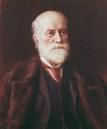
Sandford Fleming |
death Sandford Fleming Sir Sandford Fleming (born 1827), Canadian engineer and surveyor known as the "father of time zones". |
|
28 Jul 1915

Charles Hard Townes |
birth Charles Hard Townes Charles Hard Townes (died 2015), American physicist and co-recipient of the Nobel Prize in Physics (1964) for developing the maser. |
|
01 Aug 1915

Ada Hitchins |
Ada Hitchins (physics) Ada Hitchins' experimental results indicating that radium is formed by the decay of uranium are published. |
|
10 Aug 1915

Henry Moseley |
death Henry Moseley Died 10 Aug 1915 at age 27 (born 23 Nov 1887). Henry Gwyn-Jeffreys Mosely was an English physicist who experimentally demonstrated that the major properties of an element are determined by the atomic number, not by the atomic weight, and firmly established the relationship between atomic number and the charge of the atomic nucleus. He began his research under Ernest Rutherford while serving as lecturer at the Univ. of Manchester. Using X-ray photographic techniques, he determined a mathematical relation between the radiation wavelength and the atomic numbers of the emitting elements. Moseley obtained several quantitative relationships from which he predicted the existence of three missing elements (numbers 43, 61, and 75) in the periodic table, all of which were subsequently identified. Moseley was killed in action during WW I. |
|
15 Aug 1915

Amron Harry Katz |
birth Amron Harry Katz Born 15 Aug 1915; died 10 Feb 1997 at age 81. American physicist whose studies in aerial reconnaissance made possible the use of space satellites for collecting military intelligence as well as information to be used in conserving resources and aiding disaster victims. |
|
29 Aug 1915

Nathan Pritikin |
birth Nathan Pritikin Born 29 Aug 1915; died 21 Feb 1985 at age 69. American scientist, inventor and nutritionist. Pritikin believed that moderate exercise combined with a diet low in fat and high in unrefined carbohydrates reversed his own heart disease discovered in the late 1950's. He opened the Pritikin Longevity Center in 1976 in Santa Barbara, Cal. to treat others with diet and exercise in a clinical setting. |
|
09 Sep 1915

William Foster & Co. |
William Foster & Co. (technology) William Foster & Co. of Lincoln in England complete the first prototype military tank "Little Willie". |
|
23 Sep 1915

Clifford G. Shull |
birth Clifford G. Shull Born 23 Sep 1915. American physicist who shared the 1994 Nobel Prize for Physics with Canadian physicist Bertram N. Brockhouse. Shull's part of the award was for his development of neutron-scattering techniques, especially the neutron diffraction process that gave scientists a new tool to investigate the atomic structure of matter. |
|
11 Oct 1915

Jean Henri Fabre |
death Jean Henri Fabre Died 11 Oct 1915 at age 91 (born 22 Dec 1823). French entomologist and author who popularized insect natural history. He wrote ten volumes of Souvenirs entomologiques (1879-1907) in which he recorded his perceptive field observations of insect behaviour. Although his career began as a professor of physics, and in 1866 he isolated alizarin (the colouring agent in madder), his life work became the study of insects, about which he wrote in elegant prose. From his study of parasitic wasps he deduced that much of the wasp's behaviour is inherited and not learned. Victor Hugo dubbed him “the insects' Homer” and Edmond Rostand named him the “Virgil of insects.” Darwin cited him as “an incomparable observer.” |
|
15 Oct 1915

Theodor Boveri |
death Theodor Boveri Theodor Boveri (born 1862), German geneticist. |
|
01 Nov 1915

Albert Einstein |
Albert Einstein (physics) Albert Einstein abandons his hole argument for general relativity. |
|
19 Nov 1915

Earl W. Sutherland Jr. |
birth Earl W. Sutherland Jr. Born 19 Nov 1915; died 9 Mar 1974 at age 58. American pharmacologist and physiologist who was awarded the 1971 Nobel Prize for Physiology or Medicine for isolating cyclic adenosine monophosphate (cyclic AMP) and demonstrating its involvement in numerous metabolic processes that occur in animals. |
|
30 Nov 1915

Henry Taube |
birth Henry Taube Born 30 Nov 1915; died 16 Nov 2005 at age 89. Canadian-born American chemist who in 1983 won the Nobel Prize for Chemistry for his extensive research into the properties and reactions of dissolved inorganic substances, particularly oxidation-reduction processes involving the ions of metallic elements. Metals often form complexes, in which other atoms cluster around the metal atom, transfering and sharing electrons among themselves to bind together. Taube discovered that during a reaction, a temporary "bridge" of atoms often forms between metal atoms. He studied the electron transfer across this bridge, speeding up reactions that would otherwise happen only slowly or not at all. His ideas are relevant beyond his own field of study, for example, in biochemical processes such as respiration. |
|
19 Dec 1915
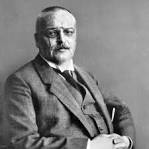
Alois Alzheimer |
death Alois Alzheimer Alois Alzheimer (born 1864), German neuroscientist. |
|
22 Dec 1915

A. E. Wilder-Smith |
birth A. E. Wilder-Smith A. E. Wilder-Smith (died 1995), English-born organic chemist. |